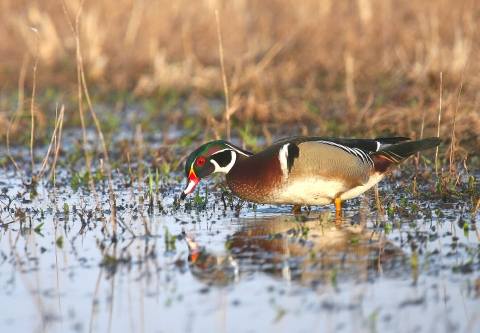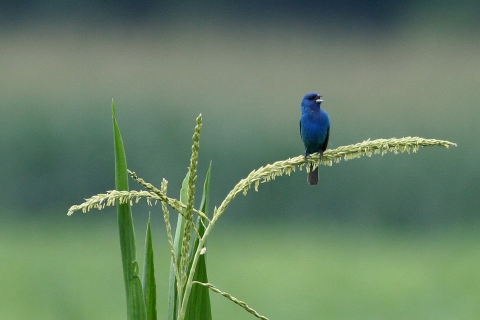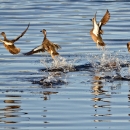About Us
Pee Dee National Wildlfie Refuge was established in 1963 as a migratory bird sanctuary, specifically to provide habitat for waterfowl and other migratory birds. The refuge includes 8,500 acres, and has a diverse landscape. The distinct habitats include bottomland hardwood forests, pine forests, mixed pine-hardwood forests, croplands, old fields, wetlands and open waters.
Our Mission
In addition to providing and managing waterfowl habitat, the refuge has other important objectives:
- The refuge strives to manage lands for the benefit of migratory shorebirds, wading birds, marsh birds and land birds. These activities include managing wetlands, forests, old fields and open waters to provide habitat for nearly 200 different migratory bird species.
- The refuge’s diverse habitats provide habitat for several rare species, some of which are listed as threatened, of special concern, or regionally rare by the state of North Carolina. Some of these include the bald eagle, little blue heron and the robust redhorse sucker. Some federally endangered species, such as the red-cockaded woodpecker and Schweinitz’s sunflower, are known to exist near the refuge. Though not present on the refuge, suitable habitats for endangered species are managed according to the management guidelines of these species. Endangered wood storks also pass through the refuge on occasion, stopping over to feed and rest during their migration.
- Non-migrants like the eastern fox squirrel, white-tailed deer, bobwhite quail, wild turkey, snakes, bats, lizards, amphibians and native creek and river fishes are also important. The refuge is here for these species too. And refuge management plans and practices strive to protect their habitats to promote species diversity and healthy population levels.
On a National Wildlife Refuge, the protection and management of wildlife and their habitats is always the top priority. However, the U.S. Fish and Wildlife Service recognizes the value and importance of getting people involved through recreational and learning opportunities. Pee Dee National Wildlife Refuge has determined that carefully managed public use activities are compatible with our wildlife management goals and objectives. These opportunities include hunting, fishing, wildlife observation, photography, environmental education and interpretation.
Our History
In 1934 a local farmer and goose hunter named Lockhart Gaddy retired from hunting, and decided to establish a goose refuge on his private pond. That year, nine wild Canada geese wintered on the pond. The wintering flock steadily grew each year, and by 1954, over 10,000 James Bay Canada geese were wintering on his pond. “Gaddy’s Wild Goose Refuge” became a popular destination for people and geese. In 1952, visitors from 47 states and 11 foreign countries signed the guest log.
The crowds of geese and people at Gaddy’s brought notoriety to Ansonville, NC. The town became a destination for waterfowl hunting and wildlife observation. In the 1960’s, the U.S. Fish and Wildlife Service decided to acquire lands near Mr. Gaddy’s sanctuary. The initial goal was to expand protection of the James Bay Canada goose flock and other waterfowl in the area. Farmlands adjacent to Brown Creek and the Pee Dee River were purchased as part of the conservation effort. Pee Dee National Wildlife Refuge was established in 1963, to provide habitat for wintering waterfowl and other migratory birds.
Unfortunately the James Bay Canada geese no longer flock here in large numbers. But several hundred of them might be seen in a good year. Overall, the refuge continues to be a great place for waterfowl, and over 10,000 ducks and geese winter here each year.
Other Facilities in this Complex
Pee Dee National Wildlife Refuge is managed as part of the Carolina Sandhills Complex.



